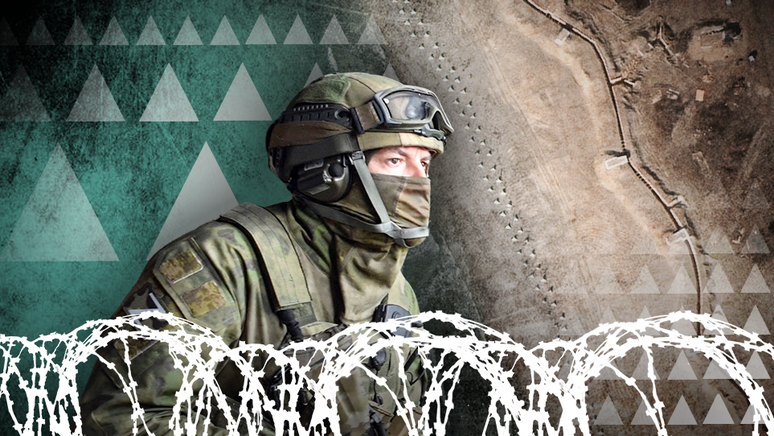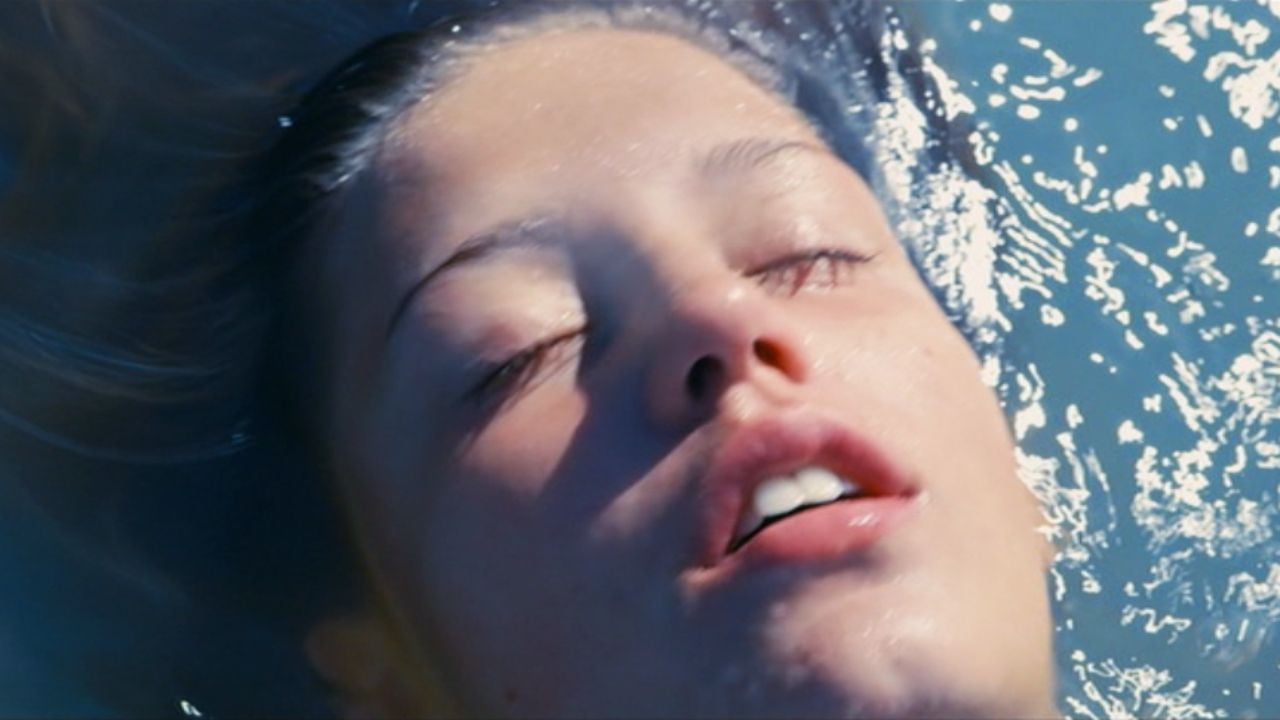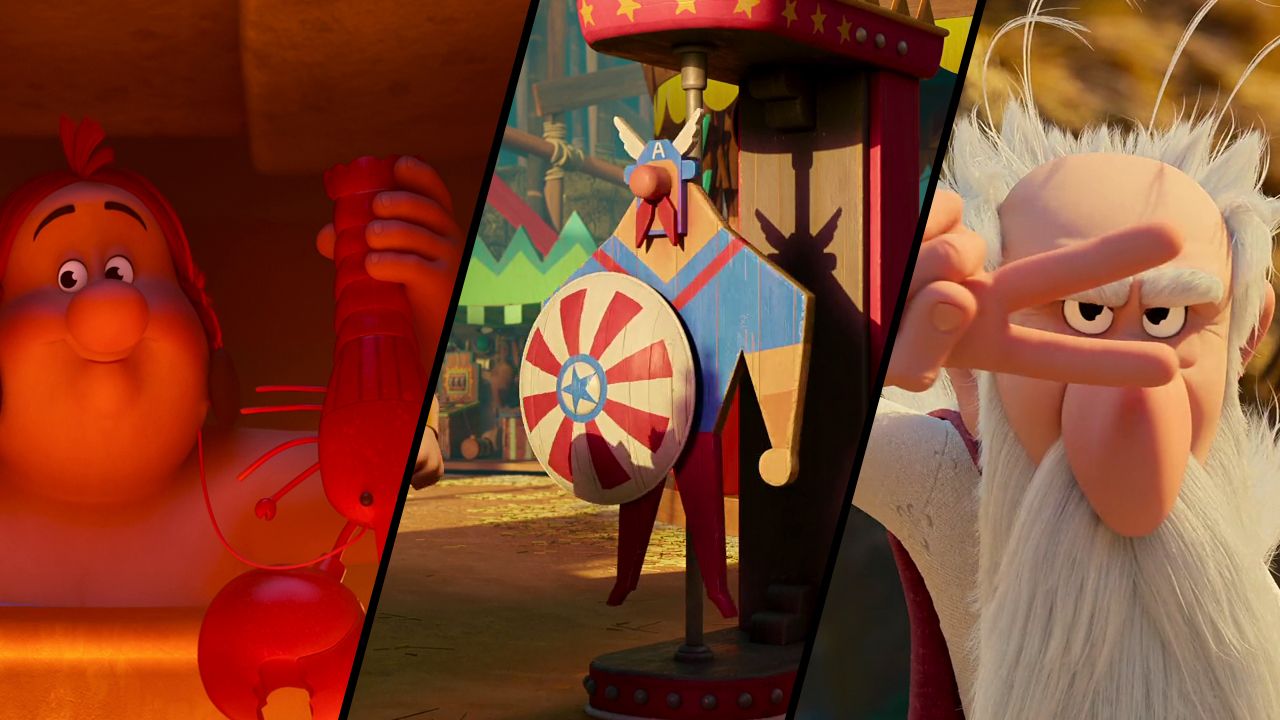BBC analysis identifies fortifications erected by Russia to counter Ukraine’s counter-offensive.
A seaside resort full of fortifications. A major road lined with anti-tank ditches. An analysis of satellite images conducted by BBC Verify has revealed part of the defenses built by Russia as the country prepares for a major Ukrainian counterattack.
After months of stalemate, the expected attack will likely be a crucial test for Ukraine as it seeks to demonstrate it can make significant battlefield gains with the weapons it has received from the West.
By analyzing hundreds of satellite images, the BBC has identified some key points in the significant construction of trenches and other fortifications in southern Ukraine since October.
These four sites offer a glimpse into what Russia expects from the counteroffensive and what defenses Ukrainian forces might encounter.
1. Western coast of Crimea
Annexed by Russia in 2014, Crimea was previously known for its beach resorts.
Now, instead of sunbeds and umbrellas, the 25-kilometer coastline is lined with defense structures installed by Russian troops.
The image below shows the only sandy beach on the west coast with no natural defenses such as cliffs or hills.
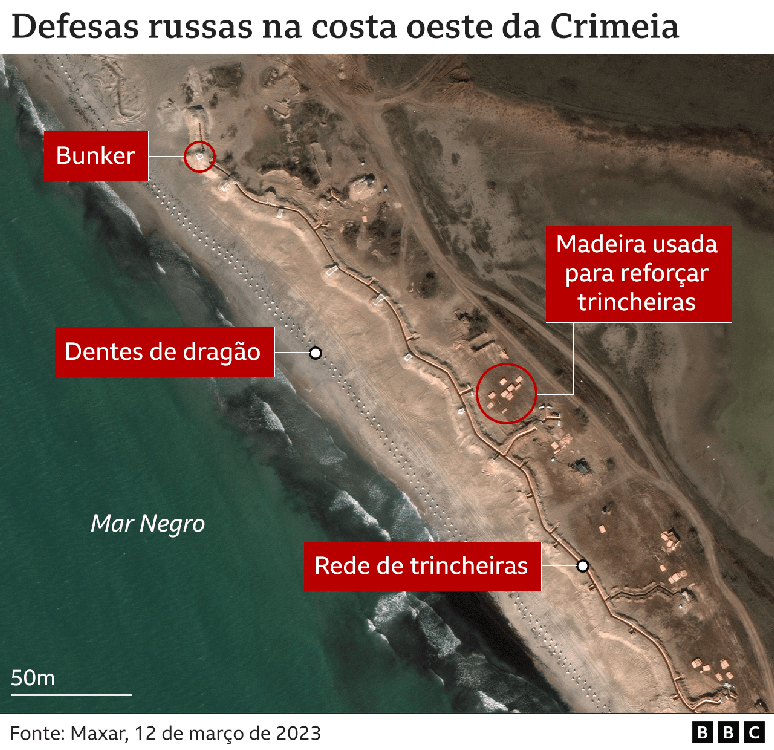
First, there are the “dragon’s teeth” along the coast: pyramid-shaped concrete blocks designed to keep out tanks and other military vehicles.
Behind them is a line of trenches, providing cover from attack. Several bunkers can also be seen along the trenches.
Piles of timber, digging machinery and ‘dragon’s teeth’ deposits along the coast suggest construction work was still ongoing when the image was captured in March.
Some military experts suggest these defenses are likely a precaution rather than a sign that Russia hopes to repel a seaborne attack, as Ukraine has few naval capabilities.
“The fortifications are likely there to stop any bold Ukrainian operation attacking Crimea by sea rather than land,” says intelligence analyst Layla Guest.
The beach fortification is just one example of a vast network of trenches, as shown by the black dots on the map below, based on the work of open source analyst Brady Africk.

BBC Verify was able to identify other key fortified sites by locating individual trenches from social media videos.
Once the exact location was discovered, an entire network of trenches could be traced using satellite imagery.
2. Tokmak
The small town of Tokmak sits on a key road in the southeast of the country that Ukrainian forces may wish to use to seal off Crimea from other Russian-controlled territories.
There are reports that Ukrainian civilians have been evacuated to turn the city into a military stronghold. This would provide soldiers with access to supplies and a base to retreat to.
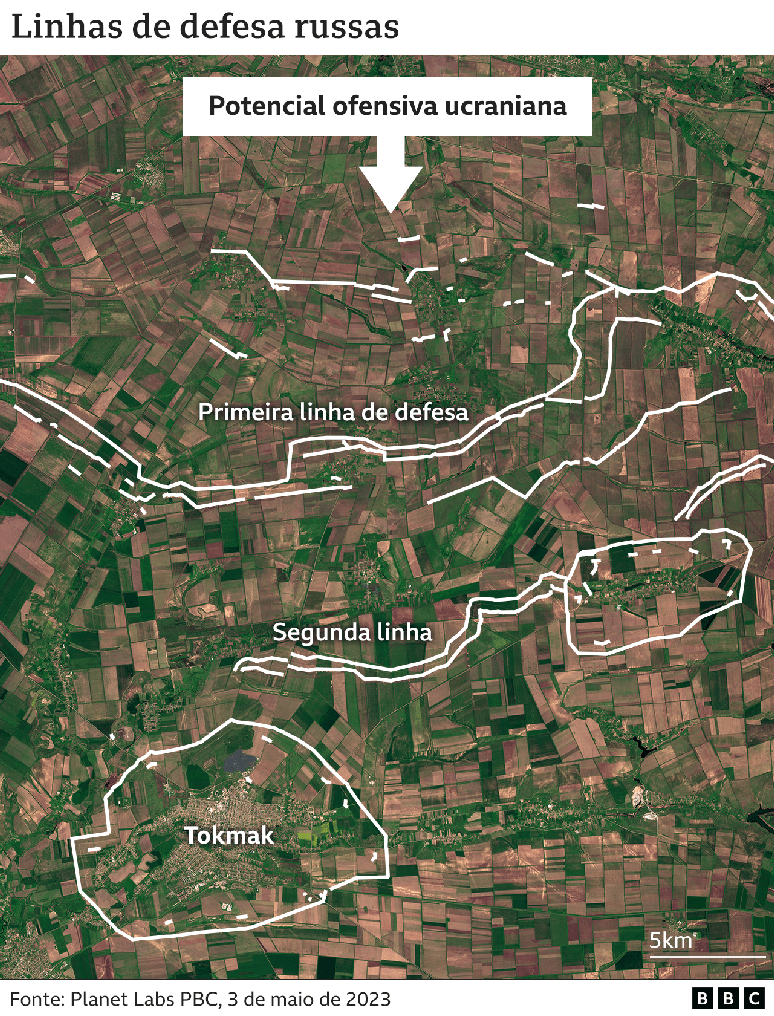
The satellite image above shows that a network of two-line trenches has been dug north of Tokmak, the direction from which Ukraine was expected to attack.
Behind these trenches is yet another ring of fortifications around the city, with three layers of defense which can be clearly seen in this Neighbor of the satellite image.
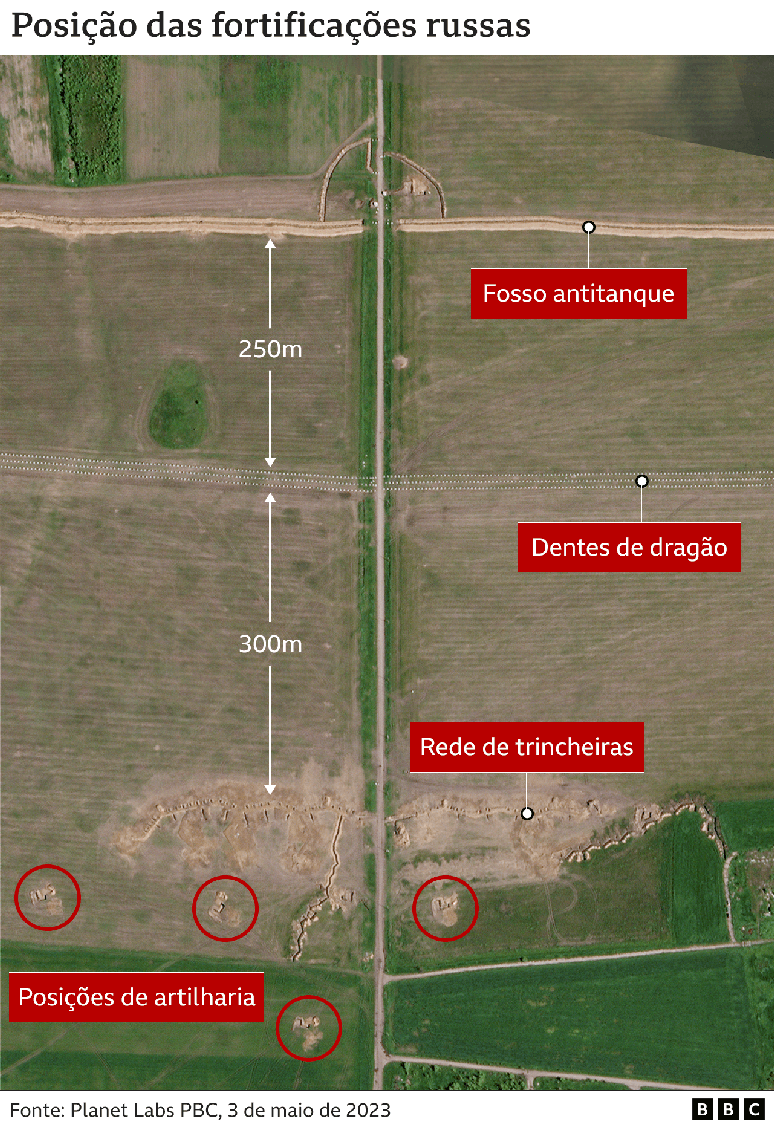
The top of the satellite image shows an anti-tank pit. They are usually at least eight feet deep and built to catch any enemy tank trying to run through them.
Behind the moat are several rows of “Dragon’s Teeth” and another network of trenches.
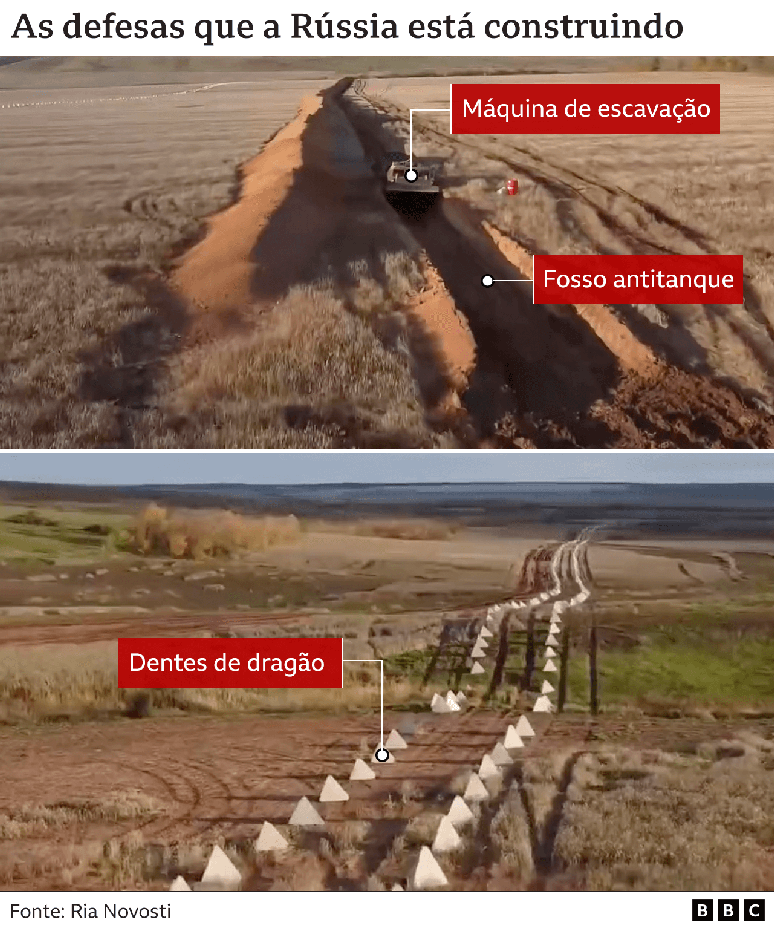
But Ukrainian forces are likely to face more pitfalls.
It is very likely that the mines were also hidden between Tokmak’s three lines of defense, says Mark Cancian of the Center for Strategic and International Studies.
“Minefields are a standard part of any defense and the Russians used them extensively throughout the war.”
“Here (the minefields) will be large and better hidden, slowing down Ukrainian attacks so that other combat elements, such as artillery and infantry, can attack,” he assesses.
BBC Verify also identified that three other towns near Tokmak were similarly fortified.
3. E105 highway
A line of anti-tank ditches and trenches now extends along a 35km stretch of the E105 road west of Tokmak.
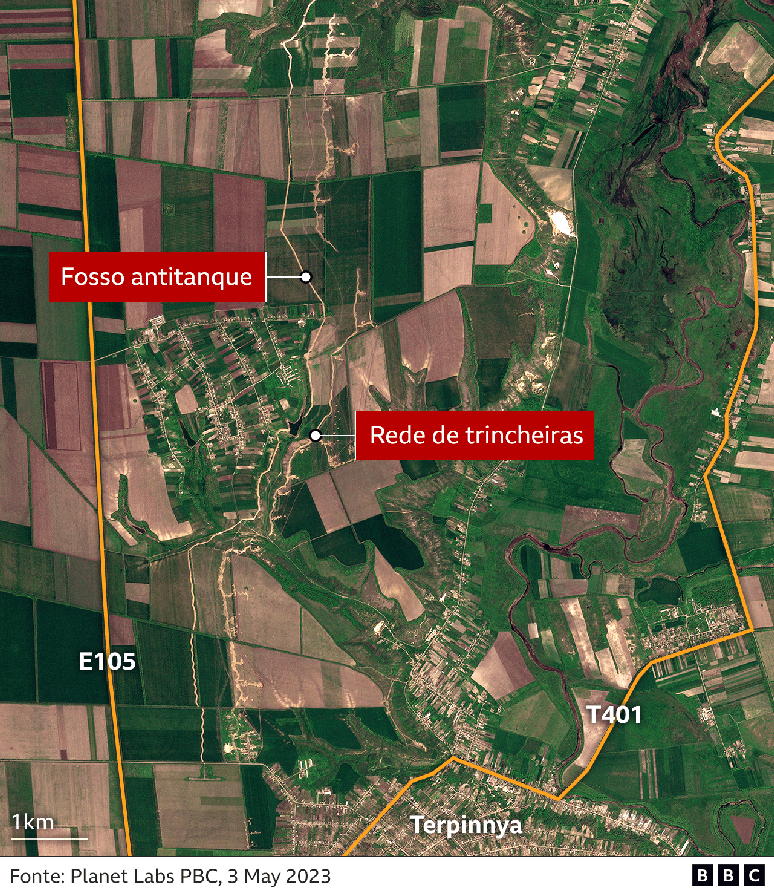
The E105 is strategically important, as it connects Russian-controlled Melitopol in the south with the Ukrainian-controlled city of Kharkiv in the north. The side that controls it can easily move troops into the region.
If Ukrainian forces attempt to use this route, Russia will likely attack with heavy artillery from behind its defenses. Russia’s position is also within range of another nearby highway, the T401, which could also be targeted.
“The Russians are worried about newly built Ukrainian armored units. If these units can get to a major highway, they can move very fast,” Cancian says.
“The Russian defenses want to push them off the road and thus slow them down.”
4. Rivnopil, north of Mariupol
The port of Mariupol has a strategic position between the Russian-occupied territories to the east and the Crimea to the south. It also became a symbol of resistance to invasion as a hard core of fighters held out for months while the city was under siege.
As Russia expects Ukraine to try to retake it, BBC Verify has decided to survey the land around the city, which has led to the discovery of a series of circular trenches.
Located near the small village of Rivnopil, about 55 km north of Mariupol, each circular trench has an earthen mound in the center, perhaps to protect the artillery or to stabilize the guns.
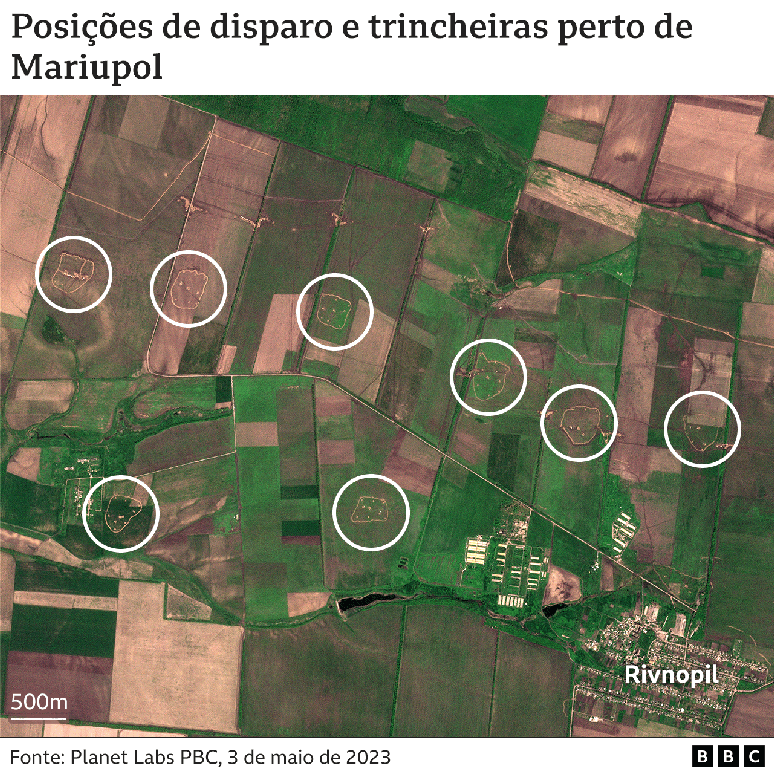
Meanwhile, circular trenches allow soldiers to take cover and move artillery to aim in any direction.
This shows that Russia is preparing to defend open areas (with no natural protection from hills and rivers) alongside its wider trench network.
But some analysts note that Ukrainian forces can use similar satellite imagery and surveillance drones to identify and bypass many of these defenses.
“The Russians are likely to try to funnel Ukrainian forces into certain routes that are heavily mined and a pre-target for Russian artillery,” says Alexander Lord of strategic consultancy Sibylline Ltd.
Satellite images show obvious defenses, but these could be part of Russia’s plan.
* Additional reporting by Tom Spencer.
Source: Terra
Rose James is a Gossipify movie and series reviewer known for her in-depth analysis and unique perspective on the latest releases. With a background in film studies, she provides engaging and informative reviews, and keeps readers up to date with industry trends and emerging talents.

